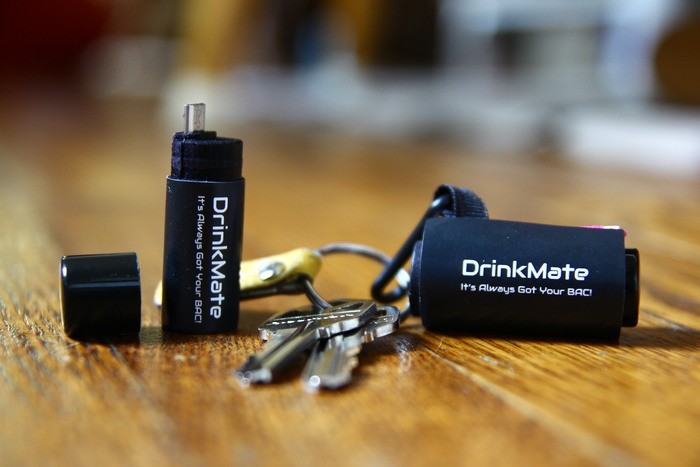The DrinkMate is a tiny breathalyzer that can plug into your Android device and take readings of yours or your friends blood alcohol levels. It’s sort of like a party game, except the winner’s prize is not getting a DUI.
After launching on Kickstarter, the device (smaller than a chapstick) blew past the $40,000 goal in less than a week, and is edging closer to $60,000 with industry estimates putting the final total between $80,000 to $150,000.

Personal breathalyzers that plug into smartphones are already widely available, so what’s so special about the DrinkMate? Well it actually does incorporate some new technology that the developers say makes it more accurate than most phone breathalyzers. The creator Shaun Masavage used semi-conductor technology that was cheaper but still similar to the fuel cell sensors found in law enforcement breathalyzers. The nozzle that is on most mass-market devices was also removed and replaced with an inlet that doesn’t require a specific amount of airflow.
Here is their Kickstarter video:
Masavage says that makes DrinkMate’s accuracy ± 0.01% BAC at BAC of 0.02%, and that it may occasionally run a little high, but will never give a lower than accurate reading. While it draws power from your phone and so requires no battery to operate, they still needed to shirk the device down quite a bit. That is, as expected, where 3D printing and rapid prototyping came in.
“I knew that if I were to make DrinkMate a reality, I needed to have 100% final design in my hands to test with, especially with regards to the plastic enclosure, to ensure that any future plastic injection molded components would work properly. Filing, drilling, and carving an enclosure by hand was out of the question for the complex curves, hollow areas, and twists needed.” Masavage told 3D printing company Sculpteo. “The solution: Sculpteo 3D printed enclosures. The prints were dimensionally accurate enough to drop my circuit board right inside with no wiggle room whatsoever! I then snapped the two pieces together, popped the cap on, and threw a label on the side. Voilà!”
The benefits of prototyping with 3D printing have been written about ad nauseum; it’s (relatively) cheap, fast, and allows developers a lot more room to expand and refine their design. The results speak for themselves. Many of the products that end up on Kickstarter would never make it past the prototype stage had their creators not been able to rapidly prototype their product multiple times during the development phase.
While the jury is still out on whether these Kickstarter success stories will result in mass market appeal, 3D printing is at least giving them a chance that they wouldn’t have had under normal circumstances.





